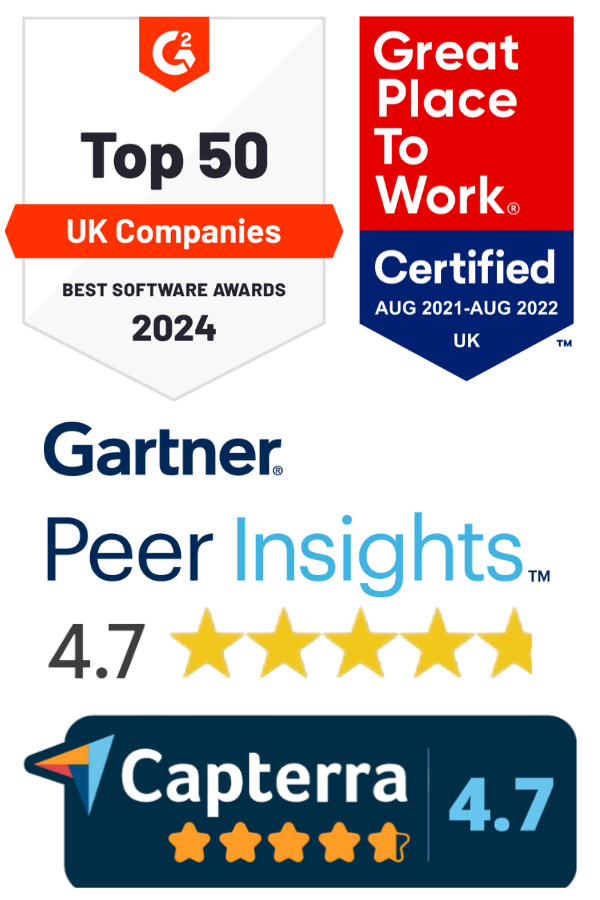
“The major reshuffle!”
“The big quit!”
“The great resignation!”
Whatever you call it.
It’s happening.
It was forecast in 2020.
We witnessed it in 2021.
And in 2022…
It seems as though it’s going to reach its peak.
People are looking to change jobs at alarming rates.
So much so that more than two-thirds of the workforce is actively looking.
According to the latest research from LinkedIn, 67% of British workers are looking for a new challenge and a fresh start.
And it’s not just in Britain.
Across the world, employees are seeing a window of opportunity and a time for a change.
LinkedIn’s data shows that in the US, we’re witnessing the highest “quit-rate” since government records began.
And in the second half of 2021 alone, well over 20 million people quit their jobs.
Crazy, right?
It begs the question…

What on EARTH is Happening?
The most common reasons people seek new job opportunities:
- They’re unhappy in their current role
- They want better flexibility
- They want more money
- To pay off their student loan debt
(And sometimes an opportunity arises that’s simply too good to pass up on!) 🤷♂️
There’s no denying that money has historically been the driving factor behind the vast majority of job switches.
After all, it’s why we’re all here right?
We work to make money in order to lead better lives!
At least, that’s been the popular narrative.
New data shows it’s not all about money 🙅♂️
LinkedIn’s research found that UK workers are now feeling more confident about having the dreaded “money talk” with their employers.
Over half (56%) feel confident enough to push for promotion and 20% feel even more confident than they did before the pandemic.
Workers are more likely to ask for raises and promotions, and no doubt, as a result, more people have been getting them.
So, if it’s not all about money, then what’s changed?

In two words:
The pandemic.
Or at least, it was the catalyst.
The pandemic totally revamped the working environment for many and provided a moment of pause and reflection that’s got people thinking “is this really for me?” 🤔
It simply accelerated digital transformation and prompted the workforce to act on an underlying mood that had been brewing for years now.
Karin Kimbrough, LinkedIn’s Chief Economist, says:
‘People have been living to work for a very long time. And I think the pandemic brought that moment of reflection for everyone. “What do I wanna do? What makes my heart sing?” And people are thinking, “If not now, then when?”’
But there’s more to it still.
The pandemic and the changes in the work environment that came with it mean more people are working from home than ever before.
It taught employers that WFH and flexible working were not only possible but that they didn’t disrupt employee output. In fact, in many instances, it was increased!
Think parents who worked part-time to cater to childcare and schooling needs 👏
As a result, more employers are offering remote/flexible work.
It’s all great for employees but disruptive for employers.
So…

What can be done?
Whether to attract this influx of job seekers or to help retain your own talent…
It has never been more important for organizations to work on their employer brand.
If you’re unfamiliar with employer branding or just thinking about building one, it’s worth considering that you already have one.
Your employer brand is simply your reputation as an employer.
It’s shaped by 👇
- Your company culture
- Employees’ voices
- Candidate experience
- Your consumer brand
Read our employer branding explainer for more info.
The likes of Glassdoor and Fairygodboss have changed the game and have been a tremendous aid to job seekers looking for an insider’s account of what it’s like to work for a company.
However, employer branding has come on leaps and bounds over the past 5 years, and now, more than ever, candidates are taking to social media to get a better sense of what it’s really like to work for a company.
Using LinkedIn, a candidate is only a matter of clicks away from hearing from every employee at your company that’s using the site 👀
What are they posting?
What’s their attitude like?
What are they posting about your company?
Are they saying anything at all?
Arguably the most important question is that last one ☝️
Your employees have the ability to seriously impact your employer brand.
If they’re not posting about company life, you’re already at a disadvantage when compared to companies whose workforces are encouraged to be more active on social.
Not only is this more likely to be seen by candidates, but it’s more authentic too 💪
Edelman’s 2022 Trust Barometer shows that the current and emerging workforce are increasingly distrustful of brands and they long for some authenticity.
An employee’s post has significantly more weight than an “employee testimonials” page on your website.
In a recent article from The Drum around connecting with Gen Z on LinkedIn, one Gen Z professional said:
“Be transparent and be authentic. If not, Gen Zers see through that. And that is more apparent than ever in the digital age.”
Why head to your website or Glassdoor when they can get their information directly from the source?
This process becomes easier within companies that already have a strong employer brand.
Research has shown that organizations that actively work on their employer brand reduce turnover by 28%, and employees are more likely to partake in brand advocacy 🙌
So, that leaves us here.
It’s not the one-stop-shop for a top-tier employer brand.
But brand advocacy from employees (employee advocacy) is no doubt a huge benefit to employers when it comes to attracting talent and elevating their employer brand above the competition.
Plus, your employees’ networks will be full of potentially great candidates for your organization.
So, where to start?

Encouraging Employee Advocacy
There’s no denying that the most authentic form of employee advocacy is when employees share simply because they want to and understand why they should.
But the #1 way to reach more talent and maximize your results is to get more of your workforce involved via an app-based employee advocacy program.
By centralizing all of your company content, employees can quickly locate and share the latest news, job opportunities, and employee content from your organization 💪
What’s more, this integrates a lot of employee activity and brings them closer to the latest company news, which in turn increases employee engagement rates and internal communications.
Why would they share? 🤔
As mentioned previously, authenticity is key and employees should be educated on the personal branding and social selling benefits that come with a social media presence.
However, if you want more employees to get involved you can utilize gamification in the form of leaderboards and rewards, to increase user adoption and encourage continued use.
Employee Advocacy tools like DSMN8’s even offer opportunities for select employees to submit employee-generated content for company use.
This can be shared by the company or by other employees, allowing you to retain the authenticity factor while getting your content in front of more people.
More people?
Correct 😎
Employees’ combined networks are, on average, 10x larger than your company’s following.
Employee shares are more authentic, more reputable, and have the ability to reach a much wider audience of potential candidates.
In 2022, can you afford to ignore this potential?

Summary
Over two-thirds of the workforce are currently exploring new opportunities.
Organizations need to be focusing on their employer brand if they’re to not only attract new talent, but ensure that their current workforce feels fulfilled, empowered, and valued.
Employee advocacy is not only the product of great company culture but also a tool that can be used to elevate your employer brand and reach top talent in the most authentic way.
Check out how one client, Greyp Bikes, used DSMN8 and their employees’ influence to attract talent in an increasingly competitive market.
Are you ready to demonstrate authenticity, promote transparency, and empower your employees to communicate with the next generation of talent online?
Ready to get started with employee advocacy?
Prefer to speak with us first?
No problem.
Schedule a call with one of the team.
Lewis Gray
Senior Marketing Manager and Employee Advocacy Program Manager at DSMN8. Lewis specialises in content strategy, growing brand visibility and generating inbound leads. His background in Sales lends itself well to demand generation in the B2B niche.

